Content marketing is effective for customer retention because it is used to attract customers and builds loyalty. An effective content marketing strategy helps you establish expertise, promote brand awareness, and keep your business top of the audience mind when it’s time to buy what you sell.
Properly implementing content marketing can attract, engage, and retain an audience. A content marketing strategy shows your brand as an authority, boosting trust among your audience by creating and distributing content in various ways.
Content marketing means creating and distributing relevant, helpful, and quality content to current and potential customers. When properly done, this content conveys expertise and makes it clear that a company values its customers.
Over time, Brands have proven that content marketing effectively increases lead generation and engagement. Content marketing gives your business an edge over its competitors, helping it attract more customers and grow its market share.
Here we will look at some of the best practices, tips, methodologies, and things you should do with content marketing.
Know your audience
Content is all about writing for a particular audience. It’s like interacting with somebody; you speak directly to the other person. Content is very similar, so we have to be able to know our audience ahead of time.
What you can do is collect the demographics of your target audience based on the following:
- Who is coming to your website? You can get that data in Google Analytics under audience.
- Who is subscribing to your emails, and who do you already have in your email database
- Who follows you on social media and interacts with your posts? You can get this data from the Analytics dashboard.
These are just three of many examples you could be doing to gather data on your audience.
You have to know who your audience is before you start writing. You need to know your audience for a successful content marketing strategy.
Segment the audience based on interests so that you can create content for a targeted audience. Interest targeting is more successful in driving consideration and purchase intent.
If it is an audience that likes some specific products you offer or features that are part of your products, then that’s the segment you will be writing about. You need to collect your data on your audience ahead of time and then segment your audience.
You are not going to write content for everybody because the shoe doesn’t necessarily fit everyone. The shoe has to fit a specific foot; in this case, we are talking about an audience. We need to be able to segment our audience, and you can also segment them by age, gender, educational level, income, and other demographic factors. Demographic targeting can be more likely to drive upper-funnel metrics.
It could also be new versus returning users, users who have purchased from you versus those who haven’t. It could be an age range or even going further on interest level or any other combination.
You can get that demographic information using Google Analytics. Inside analytics, click on Report, then under User, click on Demographics, and then on Overview. It categorizes the users by country, city, gender, interest, age, and language.
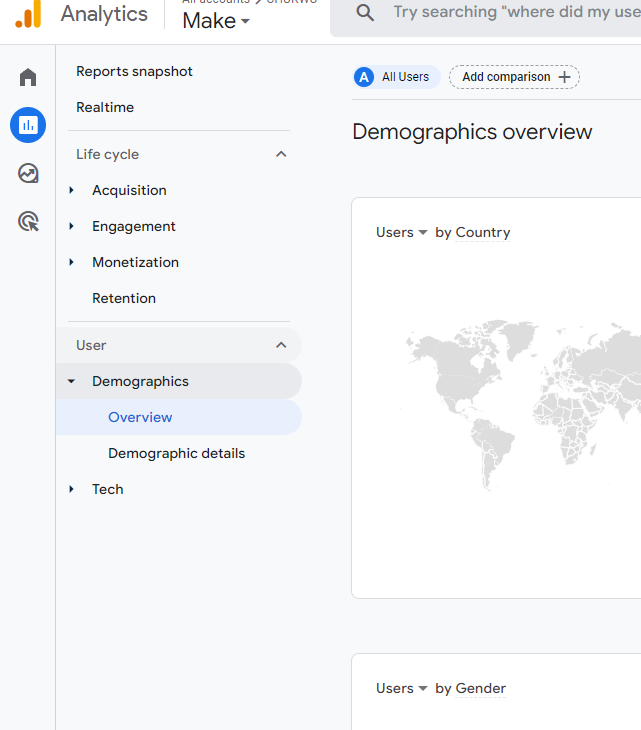
Use that to your advantage, so if you are going to write content and you already know that 99% of your traffic is female of the age range 18-24, then that content can be created and served to the audience accordingly.
You can go to Facebook page insights and get some excellent demographic data there because Facebook is all about demographics. With Facebook demographics, you can see how many fans you have broken out by men and women. Like in Google Analytics, you will also see an age range breakout.
You can also use Twitter analytics because Twitter shares some excellent insights into the educational level, so if you are dealing with highly sophisticated people with master’s degrees or even higher academic qualifications, Twitter got you covered.
On LinkedIn, you know that the majority of people you are trying to target are C-level, meaning chief executive officers (CEOs) or chief financial officers (CFOs), or chief marketing officers (CMOs). You will create your message a little differently than, say, mid-range managers or high-range managers.
Use the audience information you collect on these various platforms to your advantage by targeting the right people, creating content that speaks to their needs and wants, and ensuring your message resonates with them.
Create high-quality content
There is not a lot of content on the internet, so you must separate yourself first by always creating high-quality content. It’s going to result in a lot of things that are going to benefit you. Like
- You will build trust because the audience will see you as one that knows what they are talking about, which will help increase your brand awareness.
- When you increase your brand awareness, people know about you, so it will likely increase traffic to your website, or if you are on social media and produce good high-quality content, people will share it.
- From an SEO perspective, it can improve website ranking, meaning if you have good quality content and focus on a specific topic or a particular set of core keywords, then you will rank.
- It improves website dwell time, meaning when you have good content, people will always read to the end to see what else you offer. It’s no secret that you will gain quality engagement with good content.
- With good content, you can gain a lot of leads, meaning people will like what you say, whether it is a video, blog post, or infographics. People will be more interested and engaged, spending more time on your website. That’s all going to funnel through to them, taking their next step in the funnel and becoming more interested in your service or even purchasing one of your products.
How to create high-quality content
- Brainstorming topics and terms. You have to do the upfront work with due diligence.
- Use a keyword research tool to gather results. For example, go to Google’s keyword planner to understand how much quality, competition, and volume each keyword has. That’s what’s available in Google’s keyword planner or any keyword planning tool. Once you have a good topic, one of the benefits is creating quality content around it that will rank even as a beginner.
- Always create original content. Do not plagiarize or take somebody else’s content.
- Use compelling headlines. If you have a piece of content, you have to get the reader’s attention by writing a compelling headline that will grab their attention.
- Add resources from well-known sites. If you borrowed a data point from another source, cite/link to that source.
- Create engaging and thought-provoking content. Get your audience to think. People will read your content, not always because they know nothing about the subject matter but because they are interested in it. They want to be able to spend the time taking something away from that content.
- Follow a logical structure and use relevant videos and images. Don’t just fill the web page with text. Adding relevant videos and images can help you improve user experience and gain backlinks to your blog posts.
- Use different content forms. In case somebody is interested or maybe you want to capture some data.
- Use short paragraphs to make the content readable. Remember, if you are talking to C-level folks, you don’t have to dummy down the content. But if you are dealing with folks or people right out of high school or still in high school, adjust your content, format, and paragraphs accordingly.
- Update the content regularly. Just because you publish it doesn’t mean it’s over. When talking about a webpage, we are talking about something that is actively changing or can change. The medium is dynamic, so if a data point changes, go back and update that data point. Tell your audience about these changes because they may want to return to your webpage to see how much that data point changed.
- Avoid grammatical mistakes. There is no reason to make grammatical mistakes because today’s technology doesn’t allow for that. You can also give your content to friends and colleagues who would be more than happy to read it and make suggestions or recommendations before you can publish. So take advantage of the resources you have available. There is no reason to have grammatical mistakes because it will make you lose a lot of credibility.
- Don’t be afraid to add a clear call to action at the end of your content. If people are interested in reading it, they will probably be interested in taking the next step, whatever that next step is.
- Create content that fulfills viewers’ requirements. If somebody searches for something and your content appears in the search results, they are looking for you. What are you offering them? Is it fulfilling their requirements?
- Don’t be afraid to use examples throughout your content. Work in or integrate some case studies in there. Show clear examples to stress your points; don’t just put words on a webpage.
- Break up your content with infographics to make it visually appealing. You can add images from public domain sites, i.e., stock imagery if that will help create visually appealing content.
These are all excellent takeaways for creating high-quality content.
Run AB tests
In digital marketing, staying relevant and ahead of the competition is paramount. One of the most effective ways to achieve this is by constantly running AB tests. AB testing involves comparing two marketing campaign versions to determine which version performs better.
Regularly running AB tests is essential for businesses to optimize their content marketing strategies and improve conversion rates. By constantly testing different variations of their content marketing campaigns, brands can gather valuable insights into what resonates with their target audience and what doesn’t.
Marketers can use this data to make informed decisions about future campaigns, ensuring their marketing efforts are always effective and relevant to customers.
Additionally, AB testing helps brands identify trends and patterns in consumer behavior, allowing them to stay ahead of the curve and adapt to changing market conditions. Finally, constant AB testing is crucial for businesses looking to maximize their ROI and remain competitive in today’s fast-paced digital landscape.
Five elements to test in your content marketing strategy
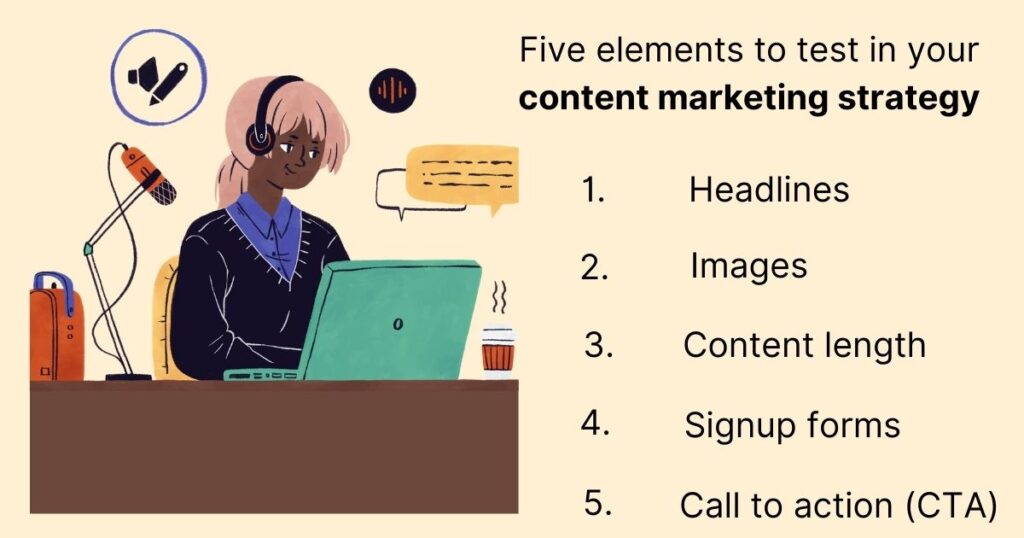
If you have content, say a blog, and you are testing that blog, test the following elements. AB testing is something that naturally should be done.
Headlines
As you already know, headlines are a crucial part of the content! They make the first impression of your writing. A good headline can draw attention and attract your ideal customers to you.
But a lousy headline will sit peacefully as your customers pass by without looking. Some headlines may even turn off your ideal customers.
So, how do you figure out what works?
The solution is to test. It is now so simple to set up and test your headlines; modern technology eliminates excuses for not testing.
Don’t stress about coming up with something out of this world. Try to rewrite your original title. You might also try flipping some terms or using a thesaurus.
· Images
An image is worth a thousand words. Therefore, why not make the best of it by making sure you’re using images to create the necessary visual interest in your content?
Use memorable images that attract and appeal to your ideal customers to make the content resonate with them.
You can test a lot of different variations of images, like stock photos, screenshots, infographics, and memes. Just make sure that those images are relevant to the post.
Use analytics to your advantage to figure out as a baseline type of image works best, then see if you can push the envelope one way or the other.
· Content length
Studies show that longer content dominates page one of search rankings, meaning that longer content ranks higher on search engine result pages. Although it is not considered a major ranking factor by SEOs, try to make your content as informative as possible.
If you know that your average time on page is very low, don’t write something very long. Instead, write something you think will stick with that time on page, but create something maybe a little longer on your AB test. The reader will stay on the page longer if it’s engaging enough.
It’s good to play with that length by creating variations and then using analytics to determine which works best.
· Signup forms
Testing and improving the signup form increases the leads coming into your business. Make good offers with the forms, too, because they give your website visitors a quick idea of your overall focus and greatly impact your list building. Building a list gives you another way to distribute new posts.
Improve the page with signup forms. What you want to do is create a user-friendly experience. So when you have signup forms, don’t make them non-intuitive, and don’t make them difficult. Link up to Facebook or Google, so if your visitors are creating an account, they can create one via Google or Facebook. You can also not put too many forms on the page.
· CTAs
A call to action (CTA) is a text prompt designed to encourage an immediate response from the target audience of a marketing campaign.
Do you want your reader to comment, visit another page, or share what they just read? Testing these elements on your website is a great way to find a call to action that moves you closer to your marketing goals as a business owner.
Here you can play around with the tone and color because colors matter. For example, don’t use red color; use green. It’s true people react to different colors, but again you have cultural variances as well, so you have to consider that.
If you are in the Middle East or Far East Asia, you know color schemes and what you say matters, and it changes versus if you are in Europe or the West. Keep that in mind when making changes to color, tone, placement, and things of that nature.
Conduct a competitor analysis
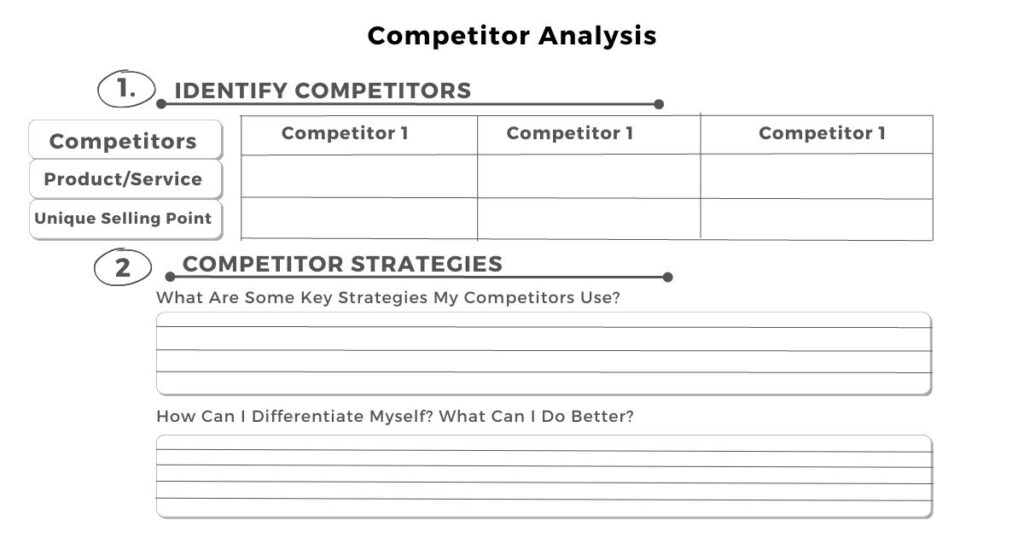
Competitor analysis (or competitive analysis) means researching and examining similar brands in your niche to gain insight into their marketing strategies. It helps you learn from businesses competing for your potential customers by studying their strengths, weaknesses, products, and marketing strategies.
Defining a competitive edge that creates a sustainable, thriving ground for your business over your competitors is critical. And competitor analysis helps you do that excellently.
Opt for competitor analysis and identify your competitors’ top-performing content for relevant topics. So what are your competitors doing? What are their baselines? You can maybe do the same or even better. This way, you can improve your conversion rates.
This data is also available in Google Analytics. Look at benchmarking reports in Google Analytics to get some form of fashion. You can also go to social media and look at your competitor’s pages and see what’s performing in terms of engagement.
You have to find out your strongest competitors by using search engines to check which websites compete with you for those keywords you are targeting. Open the search box, type in that coveted keyword you want to rank for, see who is ranking ahead of you, and see the metadata – meaning the title tag and the meta description.
You can see what your competitors are doing that’s getting them recognized in the search engine rankings using SEO tools. You can leverage an SEO platform like SEMRUSH or MOZ, or any other one you choose that will allow you to get some good insight into your competitor’s information.
Social media platforms like Facebook, LinkedIn, Twitter, and Instagram also provide robust search capabilities that allow users to find out anything posted by or about a business.
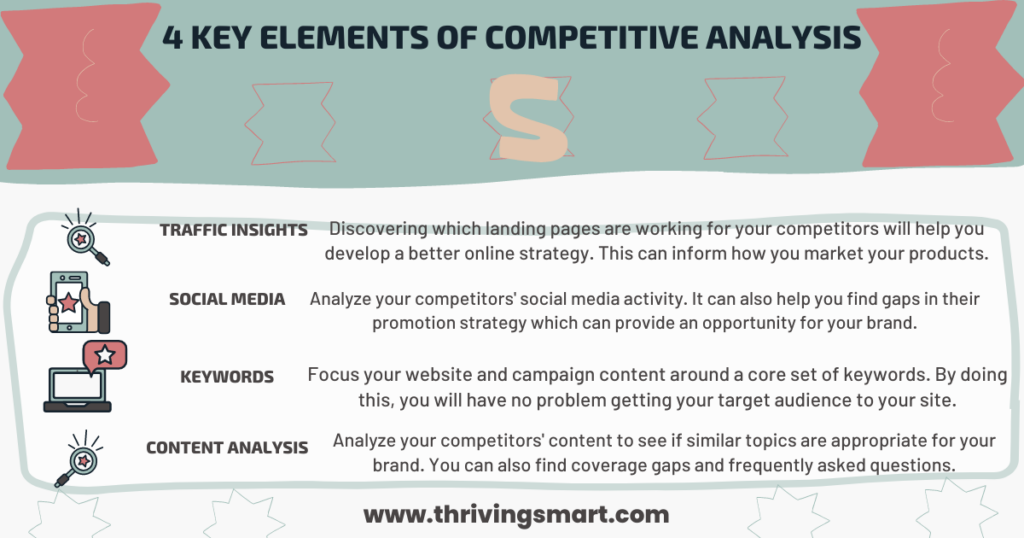
Choose a suitable content format
At this point, you have done all the homework, and now you know what you want to say and to whom you want to say it. So now you are ready to start implementation, but you need to find a format because it’s not always about a webpage per se; it’s not always about a blog post with content in it.
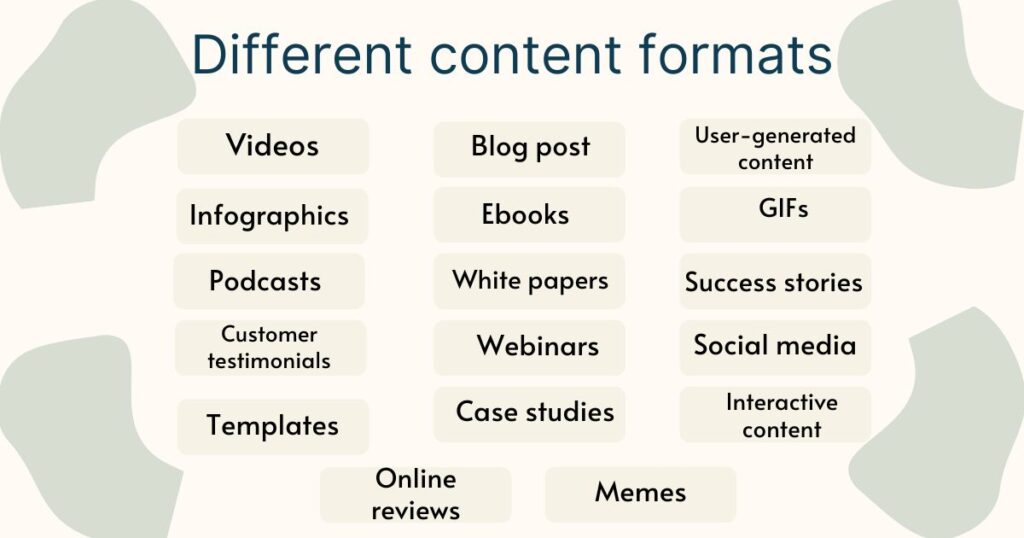
You need to decide the type of content that will fit what you are trying to say.
You can go the traditional route by just posting a blog post, and there’s nothing wrong with that because, with a blog post, you can incorporate video and imagery.
You can also go harder with an eBook or case study. Something that a user will be able to take away with a download, something more official, something more in-depth, something with a harder stamp on it. That shows your readers that you have taken the time, done the homework, research, and in-depth analysis, and now the proper format for that is not a blog post; it is an ebook.
The funnel stage you are creating content for greatly influences the content format to use.
If you are into talking, then you can do a podcast. Podcasts are always popular, depending on the topic. Videos are always a good option, and you have video platforms like YouTube that allow you to get found very quickly.
People use YouTube before they go on to purchase a product. 68% of YouTube users watched YouTube to help make a purchase decision. So if you are trying to get customers or you are trying to sway an audience to move from being aware of your brand to being a loyal customer or taking the next step in the funnel or to purchasing for the first time or more, videos kind of help convey that.
Video marketing is an excellent way to reach consumers. For example, Google research shows that 55% of consumers use online videos for shopping research.
If you are trying to convey a lot of different points, then an infographic might be your best option. Instead of writing out all these points, you can use an infographic to convey those points visually. Infographic is just visualizing data in a more organized visual way so that the audience understands what you are trying to say.
With blog posts, you should have valuable content that can be shared by your website visitors on social media. So make sure you have those shareable social icons.
With ebooks, you should have more extended and more in-depth content. If it is something that you do annually, then an ebook could be the format. However, you shouldn’t publish an ebook frequently.
With a case study, you should have a customer story, how you solved that customer’s problem, and how the customer succeeded. A case study is always there for the audience to understand your concerns.
A podcast is fantastic for situations when your audience is uninterested in reading. It can be for a certain age, gender, or culture.
Everybody absorbs information differently, so think about it and ask yourself if a podcast is the best way to communicate to your target audience. Videos are highly engaging and shareable on blog posts and most, if not all, social media platforms.
Choose a content management system
A content management system (CMS) is a software application for creating and managing digital content like web pages and blog posts. It allows multiple contributors to create, edit, organize, publish, store, and collaborate on digital content. Businesses can create, manage, and optimize their customers’ digital experience using a CMS.
A CMS helps users create, manage, and modify content on a website without the need for technical knowledge. With a CMS, you can build and manage a website without coding it from scratch or knowing how to code at all.
The three different types of CMS are
- Open-source CMS. Examples include WordPress, HubSpot, Bynder, and Joomla. This is the most common type of CMS
- Proprietary CMS. Examples include Microsoft SharePoint and Sitecore.
- Software-as-a-service (SaaS) CMS. Examples include Dropbox and Google Drive. The SaaS CMS uses cloud storage for a low monthly fee.
Therefore, choose a content management system where you can plan, produce, manage, publish, and measure your results in one place. If you are into blogging, WordPress is the way to go. If you are into building landing pages that you want to share, HubSpot could be the way to go.
Aside from the examples mentioned above, many other content management systems are available to help you with your content management needs.
Target your audience using emails
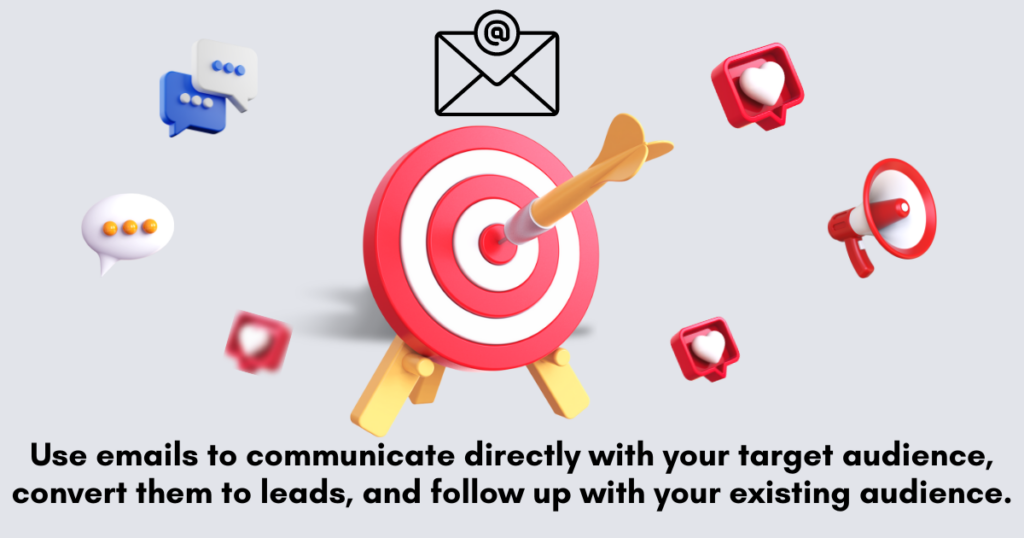
Emails help us to communicate directly with our target audience and convert them to leads. Emails are also an excellent way to follow up with your audience, so if you have done maybe a podcast or sold a product, follow up with your customers with an email.
For example, based on a podcast you just did, you may get the audience to complete a survey via email. You can also create a survey about some research topics and collects feedback from people on your contact list by following up with them via email. It should be with an infographic, perhaps built into the email.
All the formats mentioned above can complement themselves via email in many ways. You can take a blog post and package it into an email and have a link pointing back to your blog post. As a teaser, if you are doing a blog post series, you could tease that in an email.
An email is an excellent way to follow up with your target audience indirectly or directly. Indirectly is when you collect emails and send out those emails with certain information. You should be segmenting and targeting your emails just like you do with your content.
If you are producing content for a specific audience, make sure that particular audience gets that same email. Email content you could share with your target audience includes newsletters, seasonal emails, promotional emails, and automated messaging.
Automated messaging means emails you send to people who just purchased from you. Maybe follow up in a few days with another email with a survey. Another thing you could do when you know who your loyal customers are, you target them with a promotional email.
There are lots of ways to slice and dice content via email. Just make sure you know your target audience. Emails are an excellent way to communicate with your audience.
Use native ads
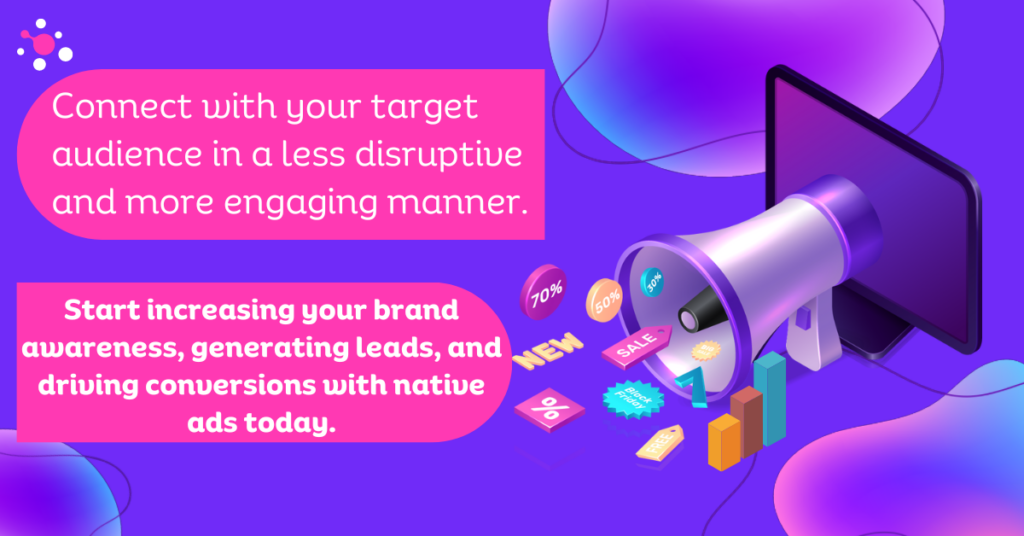
Native advertising is a form of paid advertising in which the ads fit seamlessly into the media where they appear. That is, they match the look, feel, and function of the media format where they appear.
Using native ads in content marketing is a popular strategy for businesses looking to reach their target audience in a non-disruptive way. Native ads are seamlessly integrated into a website’s content, making them less intrusive than traditional ads.
This approach allows for a more organic and authentic user experience, leading to higher engagement rates. By aligning the content of the native ad with the website’s overall theme, businesses can create a more compelling message that resonates with their audience. Companies looking to increase brand awareness and drive conversions have repeatedly proven the effectiveness of native ads in content marketing, making it a valuable tool.
Using native ads, it’s one of the most innovative ways to connect your audience with your brand. The native ads should sit next to related content to help peak people’s interest.
According to Forbes, online audiences are 25% more likely to look at a native ad than a banner. So if you are going to create content, align that content with something that will naturally fit. People call them native ads because they are native to the associated content.
Measure your content performance
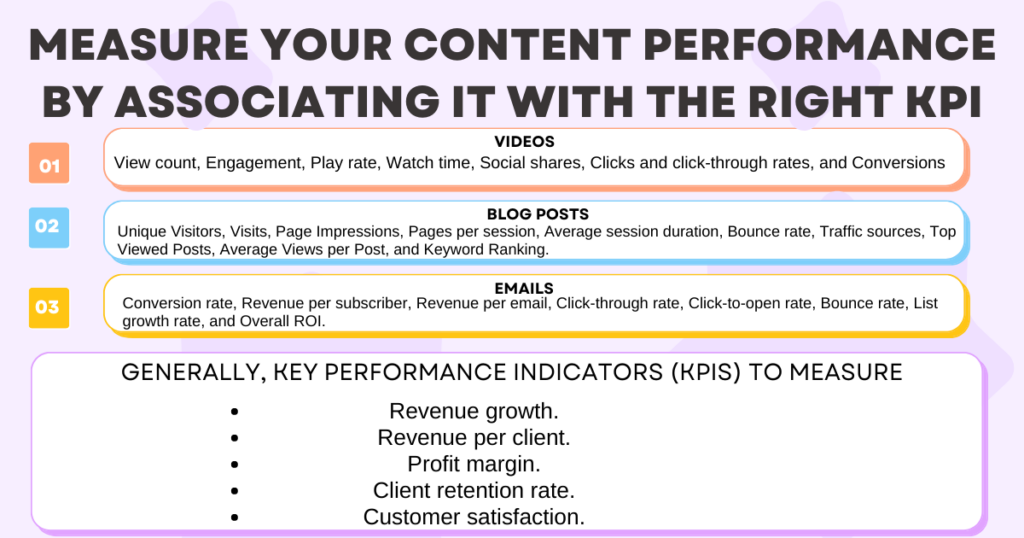
When you must have created good content, followed it up via emails targeting your audience, and associated it with native ads, you should measure your content performance.
Measuring and analyzing the performance of your content continually is essential. You can always do this by going to Google Analytics or Facebook Insights to check how the content performs.
You have to do that because you want to see what’s performing and what’s not. The key here is associating content with the right KPIs. So measuring the right metrics can help you understand whether your content is engaging.
Measuring the right metrics is necessary. When you produce videos, you will not necessarily look at page views, but you will have to look at video views. Some essential metrics like users, sessions, page bounce rates, and dwell time are great, but you must ensure you align the right metric with the right asset.
If you have a case study or an ebook, you must measure how many downloads the ebook or the case study received. If you are packaging up emails and sending them to your target audience, you must look at open rates and click rates.
If your aim of doing it is for search, you can measure how much traffic is coming in from the search engine and where you are ranking. There are a lot of things that you need to think about, like the content you are producing and then how you want to be able to measure that content.
It would be best if you are not looking at many things but the specific ones. So make sure you choose the right metrics because there are hundreds of metrics to choose from. Just be aware of the different available metrics and the most important ones for your content type.
FINAL THOUGHTS
Content marketing consistently helps you build and maintain relationships with prospective and existing customers. When your target audience views your business as one interested in its success and a reliable source of information and guidance, they are more likely to choose you when the time comes to make a purchase.
You can reach the right people and build brand loyalty with forethought and systematic content marketing. Therefore, create content that attracts, engages, and sells to let your brand and distinctive value stand out.
If you’re uncertain about relating content marketing, check out these Content marketing frequently asked questions and answers.